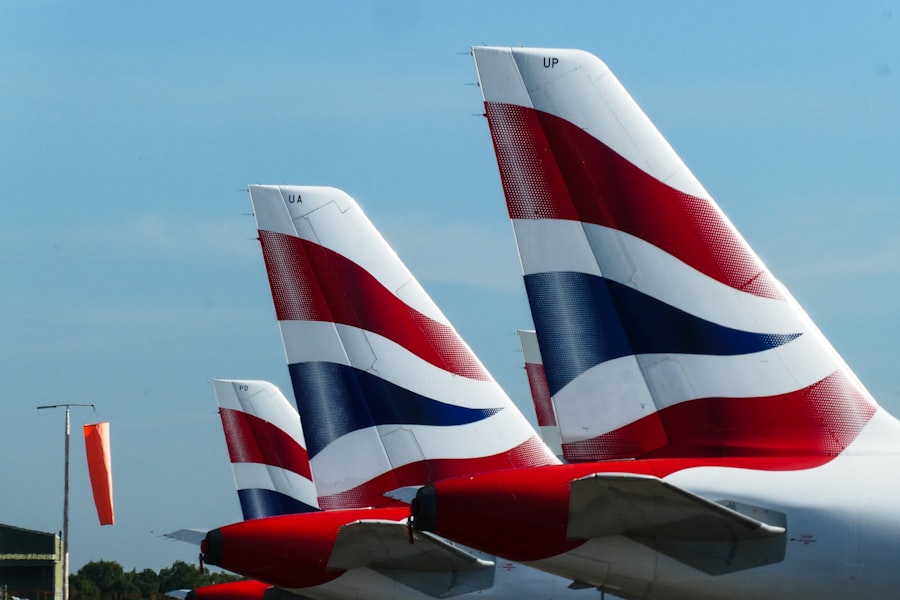
Aircraft systems assemblers play a crucial role in the aviation industry, responsible for the assembly and installation of various aircraft systems and components. These professionals work on a wide range of systems, including electrical, hydraulic, and pneumatic systems, ensuring that all parts function seamlessly together to meet safety and performance standards. The complexity of modern aircraft requires assemblers to possess a deep understanding of engineering principles, as well as the ability to interpret technical drawings and schematics.
Their work is essential not only for the construction of new aircraft but also for the maintenance and repair of existing fleets. The role of an aircraft systems assembler is multifaceted, often involving collaboration with engineers, quality assurance teams, and other skilled tradespeople. They must adhere to strict regulatory standards set by aviation authorities, such as the Federal Aviation Administration (FAA) in the United States, which governs the safety and airworthiness of aircraft.
This oversight ensures that every component is assembled correctly and functions as intended, which is vital for passenger safety and operational efficiency. As technology advances, assemblers are increasingly required to work with sophisticated materials and systems, making their expertise more valuable in the ever-evolving landscape of aviation.
Key Takeaways
- Aircraft systems assemblers are responsible for assembling, fitting, and installing aircraft systems and components.
- Education and training requirements typically include a high school diploma or equivalent, as well as on-the-job training or an apprenticeship program.
- Job duties and responsibilities may include reading and interpreting blueprints, using hand and power tools, and ensuring that all components meet safety and quality standards.
- Skills and qualities needed for this role include attention to detail, manual dexterity, mechanical aptitude, and the ability to work in a team environment.
- The job outlook for aircraft systems assemblers is expected to remain steady, with a median annual salary of around ,000. Advancement opportunities may include moving into supervisory or management roles.
- Aircraft systems assemblers typically work in manufacturing or production facilities, and may be exposed to loud noise, fumes, and other hazards.
- Job opportunities for aircraft systems assemblers can be found through online job boards, company websites, and networking within the aviation industry.
Education and Training Requirements
Education and Training
A high school diploma or equivalent is often the minimum requirement, but many employers prefer candidates with post-secondary education in aviation maintenance technology or a related field. Community colleges and technical schools offer programs that provide hands-on training in aircraft systems, electrical systems, and mechanical assembly, giving students a solid foundation in aerodynamics, materials science, and engineering practices.
Certifications and Licenses
In addition to formal education, aspiring assemblers can benefit from obtaining relevant certifications. The Federal Aviation Administration (FAA) offers a range of certifications that validate an individual’s skills and knowledge in aircraft maintenance and assembly. The Airframe and Powerplant (A&P) certification is highly regarded in the industry and demonstrates a comprehensive understanding of aircraft systems.
On-the-Job Training and Experience
Many employers provide on-the-job training to familiarize new hires with specific assembly processes and company standards. This combination of education, certification, and practical experience equips aircraft systems assemblers with the necessary tools to excel in their roles.
Job Duties and Responsibilities

The primary responsibility of an aircraft systems assembler is to assemble and install various components of an aircraft’s systems according to technical specifications.
Assemblers must carefully follow blueprints and schematics to ensure that each part is correctly positioned and secured.
Attention to detail is paramount, as even minor errors can lead to significant safety issues or operational failures. In addition to assembly tasks, aircraft systems assemblers are also responsible for conducting inspections and tests on completed systems. This may involve using specialized tools and equipment to verify that all components are functioning correctly.
Assemblers must document their work meticulously, maintaining records of inspections, repairs, and modifications made during the assembly process. Collaboration with engineers and quality assurance personnel is common, as assemblers may need to troubleshoot issues or make adjustments based on feedback from these teams. The ability to communicate effectively and work as part of a team is essential for ensuring that projects are completed on time and meet all regulatory requirements.
Skills and Qualities Needed
| Skill/Quality | Description |
|---|---|
| Communication | The ability to effectively convey information and ideas to others through various means. |
| Problem-solving | The capacity to identify and resolve problems in a timely manner using critical thinking and analysis. |
| Teamwork | The ability to work collaboratively with others towards a common goal, contributing ideas and supporting team members. |
| Adaptability | The capability to adjust to new conditions and changes in the work environment, and to learn new skills as needed. |
| Leadership | The ability to guide and motivate others to achieve a shared vision and goals, while providing direction and support. |
Successful aircraft systems assemblers possess a unique blend of technical skills and personal qualities that enable them to thrive in their roles. A strong mechanical aptitude is essential, as assemblers must understand how various systems interact within an aircraft. Proficiency in reading technical drawings and schematics is also critical; assemblers must be able to visualize how components fit together before physically assembling them.
Familiarity with hand tools, power tools, and specialized equipment used in aircraft assembly is another important skill set. In addition to technical abilities, certain personal qualities contribute to an assembler’s effectiveness on the job. Attention to detail is paramount; even small mistakes can have serious consequences in aviation.
Assemblers must also demonstrate problem-solving skills, as they may encounter unexpected challenges during the assembly process that require quick thinking and adaptability. Strong communication skills are vital for collaborating with team members and reporting any issues that arise during assembly or testing phases. Finally, a commitment to safety practices is essential; assemblers must adhere to strict safety protocols to protect themselves and their colleagues while working in potentially hazardous environments.
Job Outlook and Salary Information
The job outlook for aircraft systems assemblers is generally positive, driven by the ongoing demand for air travel and advancements in aviation technology. According to the U.S. Bureau of Labor Statistics (BLS), employment for aircraft and avionics equipment mechanics and technicians, which includes assemblers, is projected to grow by about 5% from 2021 to 2031.
This growth is attributed to the increasing need for maintenance on aging aircraft fleets as well as the introduction of new models equipped with advanced technologies. In terms of salary, aircraft systems assemblers can expect competitive compensation that varies based on experience, location, and the specific employer. As of May 2022, the median annual wage for aircraft and avionics equipment mechanics and technicians was approximately $66,000 according to BLS data.
Entry-level positions may start at lower salaries but can increase significantly with experience and additional certifications. Those who specialize in high-demand areas or work for major aerospace manufacturers may command even higher wages due to their expertise.
Advancement Opportunities

Leadership Roles
With experience and additional training, assemblers can move into supervisory or management roles where they oversee teams of technicians or coordinate assembly projects. These positions often require strong leadership skills and a comprehensive understanding of both technical processes and business operations.
Specialization in Aircraft Systems
Another avenue for advancement is specialization in specific areas of aircraft systems. Assemblers may choose to focus on particular types of systems—such as avionics or propulsion—allowing them to become experts in those fields. This specialization can lead to opportunities in research and development or roles that involve designing new systems or improving existing ones.
Further Education and Certifications
Pursuing further education or certifications can open doors to roles such as quality assurance inspectors or engineering positions within aerospace companies.
Work Environment and Conditions
The work environment for aircraft systems assemblers can vary significantly depending on their specific role and employer. Many assemblers work in manufacturing facilities or hangars where they assemble components for new aircraft or perform maintenance on existing ones. These environments are typically equipped with specialized tools and machinery designed for precision assembly tasks.
Assemblers often work as part of a team, collaborating closely with engineers, quality control personnel, and other technicians. The work can be physically demanding; assemblers may need to lift heavy components, stand for long periods, or work in confined spaces within an aircraft fuselage. Safety protocols are strictly enforced due to the potential hazards associated with working around heavy machinery and electrical systems.
Personal protective equipment (PPE) such as gloves, goggles, and ear protection is commonly required to ensure worker safety.
How to Find Job Opportunities
Finding job opportunities as an aircraft systems assembler involves several strategies that can enhance visibility within the industry. Networking plays a crucial role; attending industry conferences, job fairs, or local aviation events can help aspiring assemblers connect with potential employers or learn about job openings firsthand. Joining professional organizations related to aviation maintenance can also provide valuable resources for job seekers.
Online job boards specifically focused on aviation careers are another effective way to discover openings in this field. Websites such as Aviation Job Search or AeroIndustryJobs list positions across various sectors within aviation, including assembly roles at major manufacturers or maintenance facilities. Additionally, many companies post job openings directly on their websites; regularly checking these sites can yield opportunities that may not be advertised elsewhere.
Internships or apprenticeships can serve as a stepping stone into a full-time position as an aircraft systems assembler. These programs provide hands-on experience while allowing individuals to build connections within the industry. Many employers value candidates who have demonstrated commitment through internships or relevant training programs when considering applicants for full-time roles.
By leveraging these strategies—networking within the industry, utilizing online resources, seeking internships or apprenticeships—aspiring aircraft systems assemblers can effectively navigate their job search and position themselves for success in this dynamic field.
If you are interested in learning more about careers in the USA, specifically in the field of Aircraft Systems Assemblers, Precision, be sure to check out the related article on com/blog/2024/12/07/hello-world/’>careersintheusa.
com. This article provides valuable insights and information on the job responsibilities, skills required, and potential career paths for individuals interested in pursuing a career in this field. Explore more resources on careersintheusa.com to discover a wide range of career opportunities and guidance for your professional development.
FAQs
What is the role of an Aircraft Systems Assembler, Precision?
An Aircraft Systems Assembler, Precision is responsible for assembling, fitting, and installing parts of aircraft systems, such as hydraulic, pneumatic, fuel, and electrical systems.
What are the typical duties of an Aircraft Systems Assembler, Precision?
Typical duties of an Aircraft Systems Assembler, Precision include reading and interpreting blueprints, schematics, and technical drawings, assembling and installing aircraft components, testing and troubleshooting systems, and ensuring compliance with safety and quality standards.
What skills are required for a career as an Aircraft Systems Assembler, Precision?
Skills required for a career as an Aircraft Systems Assembler, Precision include mechanical aptitude, attention to detail, ability to use hand and power tools, understanding of technical drawings and schematics, and knowledge of safety and quality standards in aircraft assembly.
What education and training are needed to become an Aircraft Systems Assembler, Precision?
Most Aircraft Systems Assemblers, Precision have a high school diploma or equivalent. Some may receive on-the-job training, while others may pursue a certificate or associate’s degree in aircraft assembly or a related field.
What is the job outlook for Aircraft Systems Assemblers, Precision in the USA?
According to the Bureau of Labor Statistics, the job outlook for Aircraft Systems Assemblers, Precision is projected to decline by 7% from 2020 to 2030, mainly due to advancements in automation and manufacturing processes.



